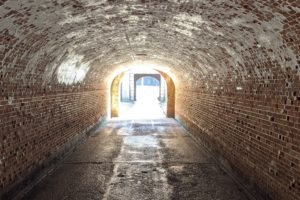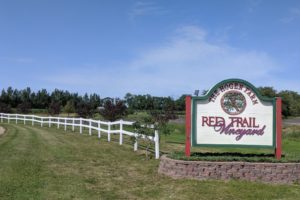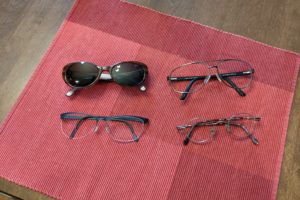The beautiful stairway in the Grand Hall takes us to the bedrooms on the second floor for the Flaglers, guests, and two of the rooms for servants. Also on this floor is a family history room, and a lace exhibit. When Whitehall was a hotel, the rooms on this floor were for very special guests.
The second floor of Whitehall was designed as private living space for the Flaglers, their guests, and domestic staff. In addition to the Master Suite, there were originally fourteen guest chambers, twelve servants’ rooms, seventeen bathrooms, and Mrs. Flagler’s Morning Room.
The museum now shows five guest rooms, each equipped with a private bath and large closet. Each bedroom is connected to the next by a couple privacy door. Three additional guest rooms are on this floor.


We’ll show you one of the guest rooms with the attached bathroom and closet, the Flaglers rooms, and two of the servants’ rooms. This map of the second floor will help us navigate these rooms.

Blue Room




Flaglers rooms

The suite is comprised of two separate dressing chambers [we only saw one chamber], a large bath area, and a bedroom.




The dressing chamber was one any of us would love.


Morning Room
A 1902 newspaper article describing Whitehall reported that, “contrary to the usual rule, Mrs. Flagler’s boudoir is some distance from her chamber.” The article goes on to suggest the placement of the room gave Mary Lily privacy and afforded her a view of Lake Worth. The Louis XV-style [1710-1774] gilded screen and spinet piano are original to the room.


servants’ room
Across from Mrs. Flagler’s Morning Room were these two servants’ rooms.



We have so many more pictures we could have shared with you of each room decorated in a different style. But we want you to visit and see them for yourself.
Flagler history
One of the former guest bedrooms has been turned into a history room of the Flagler family. We’ll be concentrating on Henry Flagler in this post.
Flagler’s family came from what’s now Bavaria in 1710, after two decades of war instigated by King Louis XIV [1638-1715] of France ravaged their land. [Since the family had lived with this war started by the French, I think it’s a little strange that so much of their home has a French influence. Guess that’s part of the Gilded Age.]

the railroads changed how we told time
Early in American’s history, each locality had its own time schedule. With the beginning of a national railroad system, however, a standardized time was needed for the whole country for safe operations. Several major accidents were caused by slight differences in timekeeping.
The Seth Thomas Regulator No. 16 (the clock in a following picture) was produced between 1875 and 1910 and sold for $125, a high price tag for the time.

The clock we’ll see in the next picture was the type used in stations and offices of railroad executives such as Henry Flagler.


Flagler’s railway
While railroad construction was happening all over the country, Henry Flagler found that almost no construction was happening in Florida since the end of the Civil War. He realized that for Florida to develop and for hotels like his in St. Augustine to succeed, a solid transportation system was needed. Flagler began buying up short-run railroads in North Florida and built a railroad bridge across the St. Johns River to gain access to the southern half of the state. Track soon started being laid. [We learned about the importance of the St. Johns River in one of our 2023 posts.]
By 1894 his system reached what we know as West Palm Beach. The next year his system was incorporated as the Florida East Coast Railway Company. Within a decade, Flagler dramatically expanded rail transportation in Florida from a few short unconnected (and largely failing) railroad operations to a coordinated system from Jacksonville to the Lake Worth area (Palm Beach).
His next challenge was to expand the railroad to Key West, a city of almost 20,000 inhabitants at the south end of the Florida peninsula. It was the most ambitious engineering feat ever taken by a private citizen. In 1912, the Over-Sea Railroad was opened, connecting the deep water port with the mainland. Hailed as the Eighth Wonder of the World, it covered 128 miles – mostly over open water – and extended his railroad 522 miles from Jacksonville to Key West.
The 1935 Labor Day Hurricane damaged much of the railroad, but the concrete bridges survived and became part of the highway system.

Flagler commented that “Others have built churches, libraries and schools; these will all pass away with time and the givers will be forgotten. But the building of the Florida East Coast Railroad and the opening up of a wilderness will not, I am sure, be effaced by time, but rather will grow in value as the years go by and as the people come in and ‘possess the land’.”


Flagler’s hotels
After retiring from Standard Oil and visiting Florida for the first time in 1878, Flagler appreciated the State’s attractive climate and natural beauty; he also saw a largely undeveloped land with few modern conveniences. He saw the opportunity for developing Florida into a state where many thousands could live, work, and raise families, and tourists could vacation during the winter months in style and comfort. As America’s last frontier, it seemed to provide unlimited opportunity for the man who had pioneered the petroleum industry.
In 1885 he began building the grand Ponce de Leon in St. Augustine, the first Flagler would build or purchase along his rail and steamer lines. The 450-room hotel was the most spectacular that Florida had ever seen, establishing a new standard of luxury in the hotel industry. His main reason for extending his hotel empire south of St. Augustine was to ensure good weather for his winter guests. In January 1886, the city reached a record low temperature of 22 degrees, only 6 degrees warmer than the weather in New York on the same day. Record freezes in the winter of 1894-95 also helped convince him of the need to go southward.

Eventually his company built or purchased 13 hotels in Florida and the Bahamas, creating a legacy of luxury that lives on today, most notably at The Breakers Hotel in Palm Beach.

Flagler’s philanthropy
By his death in 1913, Flagler’s estate was estimated at 100 million dollars, equivalent to more than 12.5 billion dollars when this sign was hung.
Like other wealthy Gilded Age businessmen, Flagler understood his obligation to distribute his wealth so he could create opportunities for others. According to Flagler, “I have come to the conclusion that the best way to help others is to help them help themselves.”
Since his father had been a Presbyterian minister, Flagler directed most of his contributions to religious organizations of various denominations. He also provided funding and land for schools, churches, parks, courthouses, libraries, hospitals, and public utilities throughout Florida [so much opportunity for jobs!].

A century later more than one billion dollars of his fortune has been invested in endowments or trusts that provide more than 50 million dollars of support for educational, charitable, and cultural programs nationwide each year.


Flagler built numerous hospitals that not only helped the municipalities, but also benefited his railroad and hotel enterprises. When Flagler arrived in Florida, no hospitals existed between Jacksonville and Daytona. In St. Augustine, the Alicia Hospital, named after Flagler’s second wife Ida Alice, opened in 1890. In 1905, the hospital’s name was changed to Flagler Hospital to honor its benefactor.

Flagler supported many congregations in South Florida. In Palm Beach, he built the Royal Poinciana Chapel (Little White Chapel) which was on hotel property and which he attended. In West Palm Beach, he donated land and a parish house for St. Ann’s Catholic Church, the finest Catholic church in Palm Beach County. He also gave land to Holy Trinity Episcopal Church, the second Episcopal church in the Lake Worth Region.

Before Palm Beach County existed, Flagler had a plan for laying out West Palm Beach and providing infrastructure for the growing community. With this plan he was able to supply jobs for thousands of workers, encouraged tourism to the area, enhanced the local agricultural industry, and provided the necessary land for the city to take shape. He built City Hall, a fire station, donated land for the County Courthouse, and provided other important services.
In 1899, Flagler purchased two parcels on Lake Worth and immediately transferred them to the City of West Palm Beach for use as a public park.

We’ve already seen the side of Henry Flagler that’s described in the following picture. But let’s look at the last paragraph.

“Today, thanks to the industries established by Flagler, Florida’s economy ranks third among U.S. states and is larger than nearly 95% of the countries on earth. Indeed, no individual has had a greater or more lasting impact on a state than Henry Flagler has had in Florida.”
Flagler’s death honored
Henry Flagler died in March 1913 in Palm Beach, after falling fell down a flight of marble stairs at Whitehall, at 83 years of age. Wikipedia gave the following description of those who honored him as he took his final trip by train to St. Augustine.
“At 3 p.m. on the day of the funeral, May 23, 1913, every engine on the Florida East Coast Railway stopped wherever it was for ten minutes as a tribute to Flagler. It was reported that people along the railway line waited all night for the passing of the funeral train as it traveled from Palm Beach to St. Augustine.”
how Flagler’s businesses grew
After the Civil War, the American oil industry grew rapidly. Before the war, more than 3/4 of American homes were lit by paraffin candles, lard, or whale oil. In the late 1850s kerosene, the first use for surface crude, was discovered. Since it could be used to light and heat homes, the demand for crude intensified.

Soon after his salt manufacturing venture, Flagler met and joined forces with Rockefeller and Andrews. Their partnership in Standard Oil, founded in 1870, was the source of Flagler’s great fortune.
What’s this salt venture? Here’s what Wikipedia had to say:
“In 1862, Flagler and his wife’s brother-in-law Barney Hamlin York (1833–1884) founded the Flagler and York Salt Company, a salt mining and production business in Saginaw, Michigan. He found that salt mining required more technical knowledge than he had and struggled in the industry during the Civil War. The company collapsed when the war undercut commercial demand for salt. Flagler returned to Bellevue having lost his initial $50,000 investment and an additional $50,000 he had borrowed from his father-in-law and Daniel. Flagler believed that he had learned a valuable lesson: invest in a business only after thorough investigation.”
Now we know about that story.

Like other corporations, Standard Oil built its business rapidly by acquiring competitors’ operations and securing shipping discounts. Within a short time, it produced massive amounts of petroleum products at lower consumer prices.

Eventually, Standard Oil became the best-known business in America.
Lace Exhibit

Samples of 18th, 19th, and 20th century Battenberg, Point de Venise, and Rosepoint lace are included. Up to and throughout the Gilded Age, lace was a highly prized commodity.
If you’d like to see more about this lace collection and the history of lace, let me know. Otherwise, let’s go see Flagler’s No. 91 private railcar that’s exhibited in the Pavilion and the last of the famous coconut trees.
Flagler’s No. 91
While we travel to vacation spots by airplanes, during the Gilded Age, the wealthy traveled by railroad cars and steamers. And we’ve learned how Henry Flagler made his destination spots desirable and available to his guests. These private railcars typically featured plush interiors in the sleeping quarters, drapery-hung parlors, kitchens, and more. Plus they had the latest technology and often a small staff.

But how would the rich and famous get around once they arrived at the luxurious hotels?

For over 100 years, these chairs played a major role in many of America’s tourist locations. At the 1893 Chicago World’s Columbian Exposition, wheel chairs were operated by seminary students who comfortably transported visitors around the exhibits. In Atlantic City, they were called “rolling chairs” as the rich were transported along the Boardwalk.

Over 200 chair men were employed by Flagler’s Palm Beach hotels. One could hire a wheel chair for the entire day for $5 (approximately one day’s wage for the average worker in 1900). Two years after Flagler’s death in 1913, horses and other modes of transportation began to find a place in Palm Beach life, and the popularity of these chairs declined but were still in use for another 60 years.
Now to his private railcar.

From the Palm Beach Daily News, “It was designed in 1886 for $70,000 to Flagler’s specifications — complete with an observation room/parlor, private bedroom and bath, kitchen and dining room with eight convertible berths/beds.”







last cocoanut grove
According to the Town of Palm Beach History: “According to early settler accounts, Palm Beach received its name from a shipwreck named the ‘Providencia.’ The ship washed ashore in January 1878 with a load of coconuts bound from Havana to Barcelona. Early settlers lost no time claiming salvage and planting the coconuts, which were not native to South Florida, in an effort to launch a commercial coconut industry.”
Palm Beach was named for the cocoanut groves that were once common along the eastern shore of Lake Worth.



What a wonderful visit to another era in our nation’s history. Thank you, Mr. Flagler.
Now it’s time to start home.





1 Comment
Leave your reply.